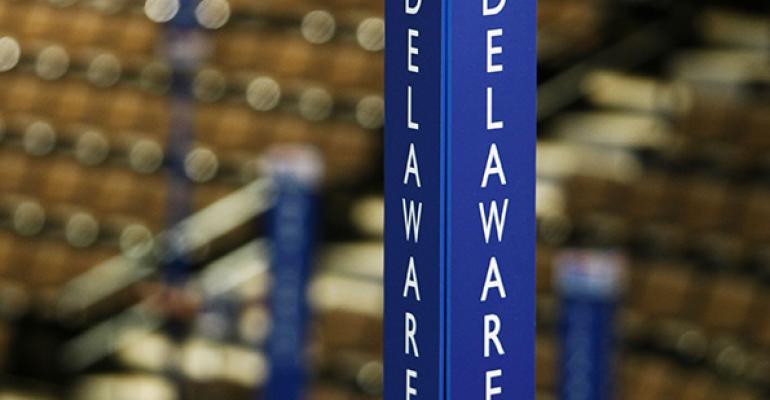New facilities for storage of art in the State of Delaware are receiving enthusiastic press, including a New York Times article, “Art Collectors Find Safe Harbor in Delaware’s Tax Laws,” on Oct. 25, 2015.
Modeled on Swiss facilities, a significant attraction is the convenience of locating the artwork on the western side of the Atlantic Ocean, a mere truck ride away from the art markets of New York City and the metropolitan areas of the East Coast, instead of an inter-continental flight away in Switzerland.
As the news headline suggests, a second attraction is the avoidance of taxes, a common goal of the wealthy and their advisors. The specific tax to be avoided is the sales and use tax, which applies at a rate of 8.875 percent in New York City, but not at all in Delaware. Clearly, successful avoidance of this tax may remove one hurdle to buying and selling artwork.
The rise of these Delaware facilities provides the opportunity to review other taxes that may apply to artwork and how they may be impacted by the use of a specific jurisdiction for storage of tangibles.
Tax Burdens on Art
The Internal Revenue Code sets forth a bias against investment in art. It applies a 28 percent capital gains tax rate to “collectibles,”1 including any work of art.2 It also prohibits qualified retirement accounts from investment in art and other collectibles.3 Net gain from the disposition of property, that is, art, is also subject to the 3.8 percent Medicare tax for high income taxpayers.4
And then, Delaware, like many states, adds its own income tax burden. It taxes the Delaware source income of non-residents, including gains attributable to “the ownership or disposition of any interest in . . . tangible personal property in this State. . . .”5
High income tax rates make challenging any planning for lifetime gifts of appreciated artwork. Gifted property retains the donor’s carryover cost basis that preserves the capital gains tax liability for donees when the property is sold. Depending on the amount of pre-gift appreciation versus the post-gift / pre-death appreciation, any estate tax burdens avoided by a gift may be more than offset by the preserved capital gain tax.6
Estate Taxes
One result of the income tax burdens on artwork is the increased likelihood of an owner retaining the property until death. At death, heirs receive a cost basis increased to the date of death value. While the artwork may be subject to estate taxes, it avoids federal capital gains tax at the higher 28 percent rate, as well as the 3.8 percent Medicare tax and the state income tax. If all these taxes were instead preserved as a result of a lifetime gift, the total burden of the taxable gift plus the income taxes on sale may readily be greater than the estate tax burden.
The estate tax burden is high. The federal estate tax is 40 percent. In addition, 19 states impose death taxes, including New York, New Jersey and Connecticut at a top rate of 16 percent. Taking into account the deduction allowed for state death taxes, decedents in those three states pay a top marginal rate of estate tax of 49.6 percent.
Since state death taxes were uncoupled from the federal estate tax in 2001, the 19 states that continue to impose a death tax have increasingly pursued policies independent from one another. New York, New Jersey and Connecticut reduce their estate tax in proportion to real or tangible property located out of state. Storing artwork in Delaware will in fact reduce a decedent’s estate tax paid in those three jurisdictions.
But, Delaware doesn’t pass on this tax savings to its art storage patrons. Delaware also has an estate tax that it imposes on non-residents leaving the real and tangible personal property located in the state.
Increased Tax Burdens?
The tax planning buzz surrounding the rise of Delaware as a free port for art transactions appropriately focuses on sales and use tax issues. When the application of income and estate taxes are considered, as long as the owner’s home state is imposing income and estate taxes, storing artwork in Delaware is likely to yield a result similar to keeping the property at home. If, on the other hand, the owner lives in a more tax friendly state, with no income or estate tax, using Delaware free ports may actually increase tax burdens. If Delaware wishes to be more accommodative in promoting this nascent industry, it may wish to follow the practices of more tax friendly jurisdictions, at least with respect to the tangibles being stored there.
Endnotes
- Internal Revenue Code Section 1(h).
- IRC Section 408(m).
- Ibid.
- IRC Section 1411.
- 30 Del. C. Section 1124.
- See generally, Joseph Mahon, “The TEA Factor, How much appreciation must occur for a gift to provide estate tax savings greater than income tax costs,” Trusts and Estates, (August 2011), at p. 46.
- 30 Del. C. Section 1504.






